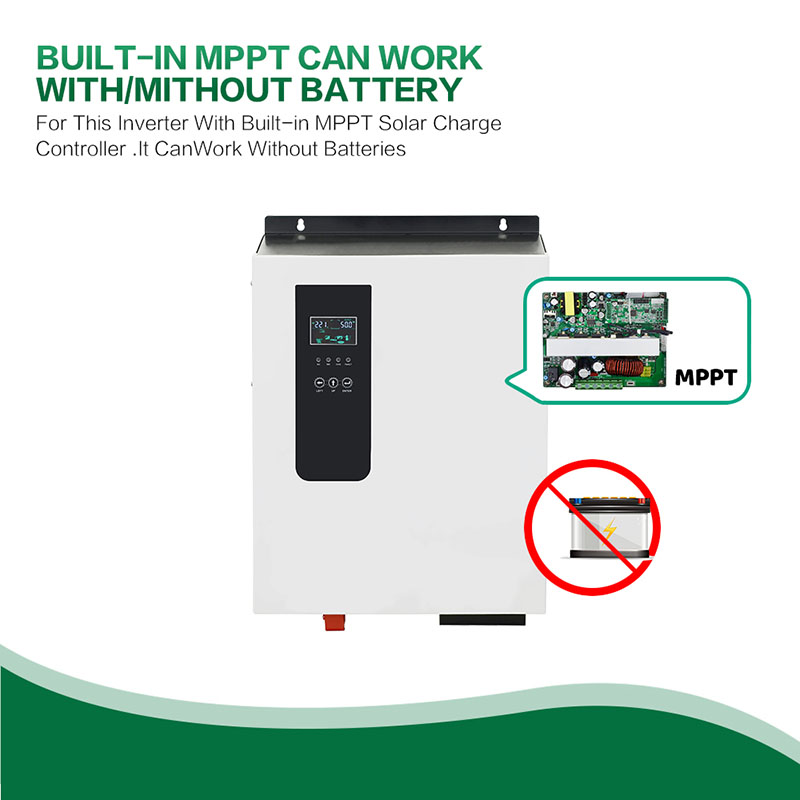Photovoltaic inverter - MPPT technology
 Aug 09,2022
Aug 09,2022

 Rekesun
Rekesun
With the rapid development of domestic photovoltaics, the application of household photovoltaic inverters has become more and more extensive. However, when choosing inverters for users, some users still have many questions about this mysterious household appliance. As a global photovoltaic inverter TOP3 enterprise, Rekesun covers grid-connected photovoltaic inverters ranging from household single-phase 1KW to power stations. This time, we will tell you a few problems that household inverters often encounter, and unveil the mystery of household photovoltaic inverters.
What is MPPT?
Like all people who are new to photovoltaics, they often hear people talking about MPPT in on grid inverters. What exactly is MPPT?
MPPT (Maximum Power Point Tracking) refers to the tracking and control of the output voltage and current changes caused by the changes in the surface temperature of the photovoltaic array and the changes in solar irradiance, so as to keep the array in the maximum output working state all the time to obtain the maximum output. Automatic adjustment behavior of power output.

As shown in the figure above, as the surface temperature of the photovoltaic modules and the local solar irradiation keep changing, the inverter can continuously catch up with the combination of its own software and electrical hardware, track this change, and make the output of the photovoltaic modules possible. A technique that always maximizes.
MPPT efficiency represents the accuracy of component tracking in practical applications of this technology and is divided into static MPPT efficiency and dynamic MPPT efficiency.
How to calculate the number of each string of solar modules in households?
In the early stage of on-site design and installation, the question that plagues each owner is how many inverters are suitable for series connection. Here is a short answer for your reference.
When calculating the number of components, three parameters need to be confirmed first. First, confirm the minimum and maximum temperature of the project site; secondly, confirm the maximum input voltage and MPPT voltage range of the inverter; finally, confirm the peak power, open-circuit voltage temperature coefficient, and peak power temperature coefficient of the solar module. After confirming the above, we can calculate the optimal configuration of each string of access.
The component parameters are as follows:
Taking a place in the north as an example, the minimum temperature is -25°C and the maximum temperature is 30°C. The number of modules per string in this place is:
According to the capacity of the inverter and the peak power of the components, it can be calculated that about 42 modules are needed, and each channel is connected to 21 modules. It can be verified by formula 1 that 6≤N≤26, and 21 modules meet the requirements of the formula, which can be verified by formula 2. The output N≤24. 21 blocks meet the requirements, so this site can use components with 21 blocks per string to connect to the inverter.
If the number of components per string is inconsistent due to site reasons, how to connect the inverter input?
The calculation of the number of connected components per string has been described above, but during the construction process, due to the actual conditions such as the on-site roof, the components cannot be laid according to our theoretical data results, and the number of blocks in each string of components will be somewhat different. The construction brought some difficulties. How to deal with the discrepancy between the number of specific construction blocks and the theoretical calculation value.
Take the project just now as an example. According to the theoretical calculation, there are 21 pieces per string, and two strings are connected. The inverter and the components are perfectly matched. However, due to the site orientation, shadow, and other reasons, one string of components can only be connected to 19 pieces, and the other string only It can connect 23 strings. At this time, the inverter needs to have multiple MPPTs. Each MPPT can track the maximum power point of the components according to the number of components actually connected, without interfering with each other, which perfectly solves the problem of shadows. And the trouble of inconsistent orientation. The Rekesun string inverter has multiple MPPTs, and the number of MPPTs for inverters above 4KW is greater than 2, which is suitable for various rooftop photovoltaic projects.



 Home
Home What are the functions of solar inverters that you know?
What are the functions of solar inverters that you know? 







 syplighting.en.alibaba.com
syplighting.en.alibaba.com



